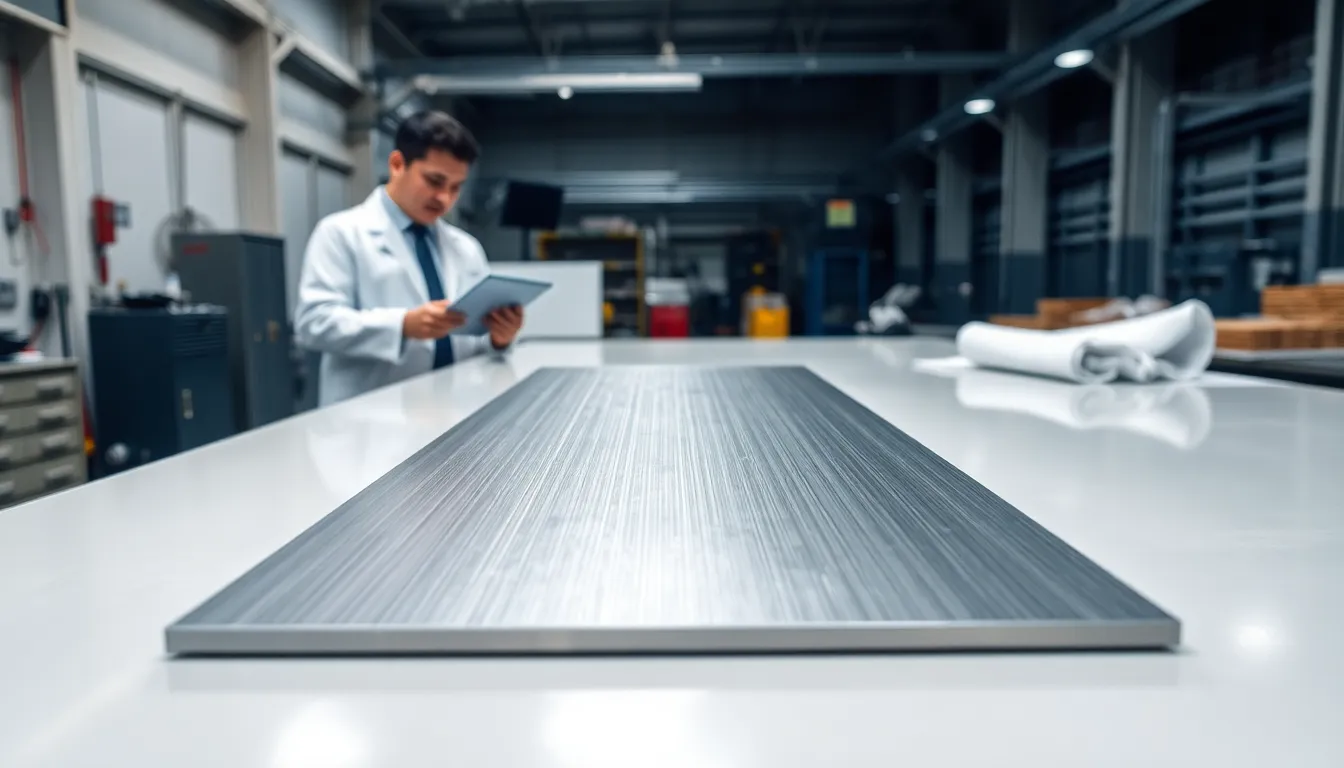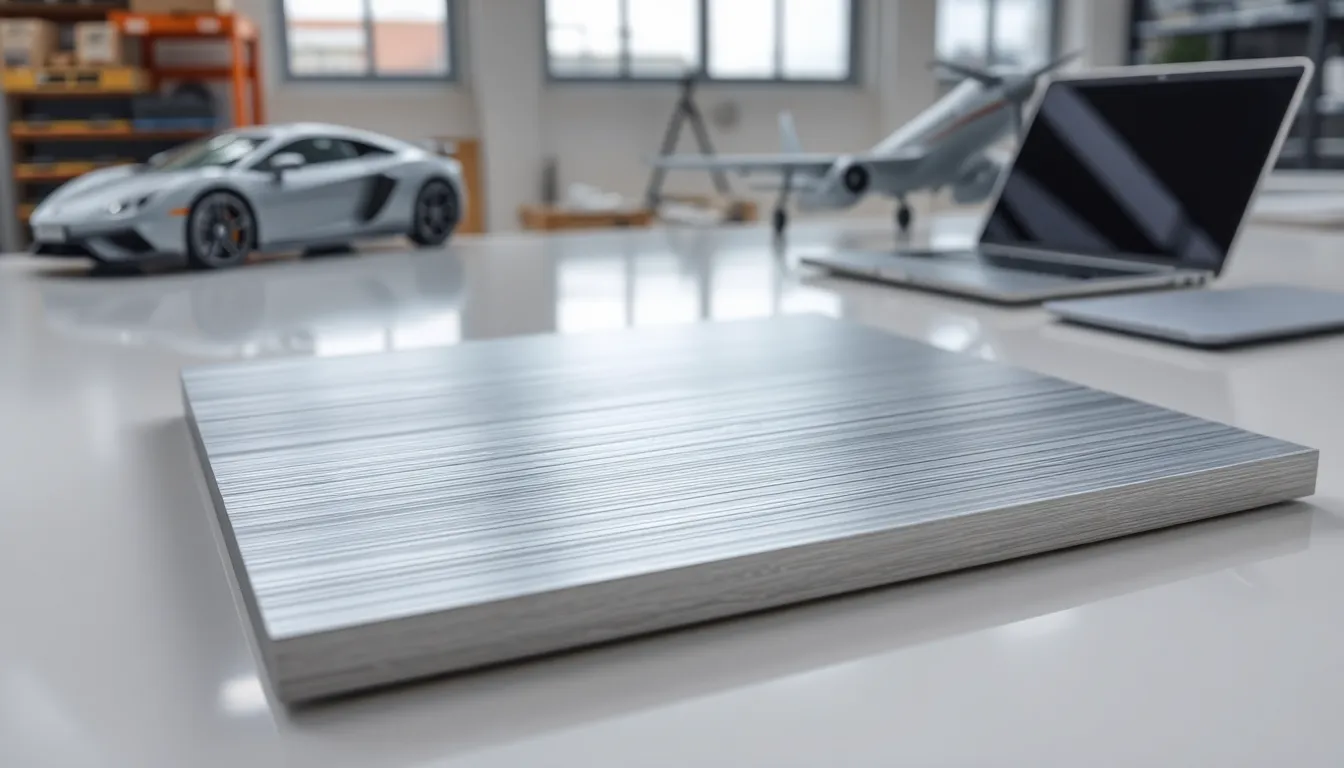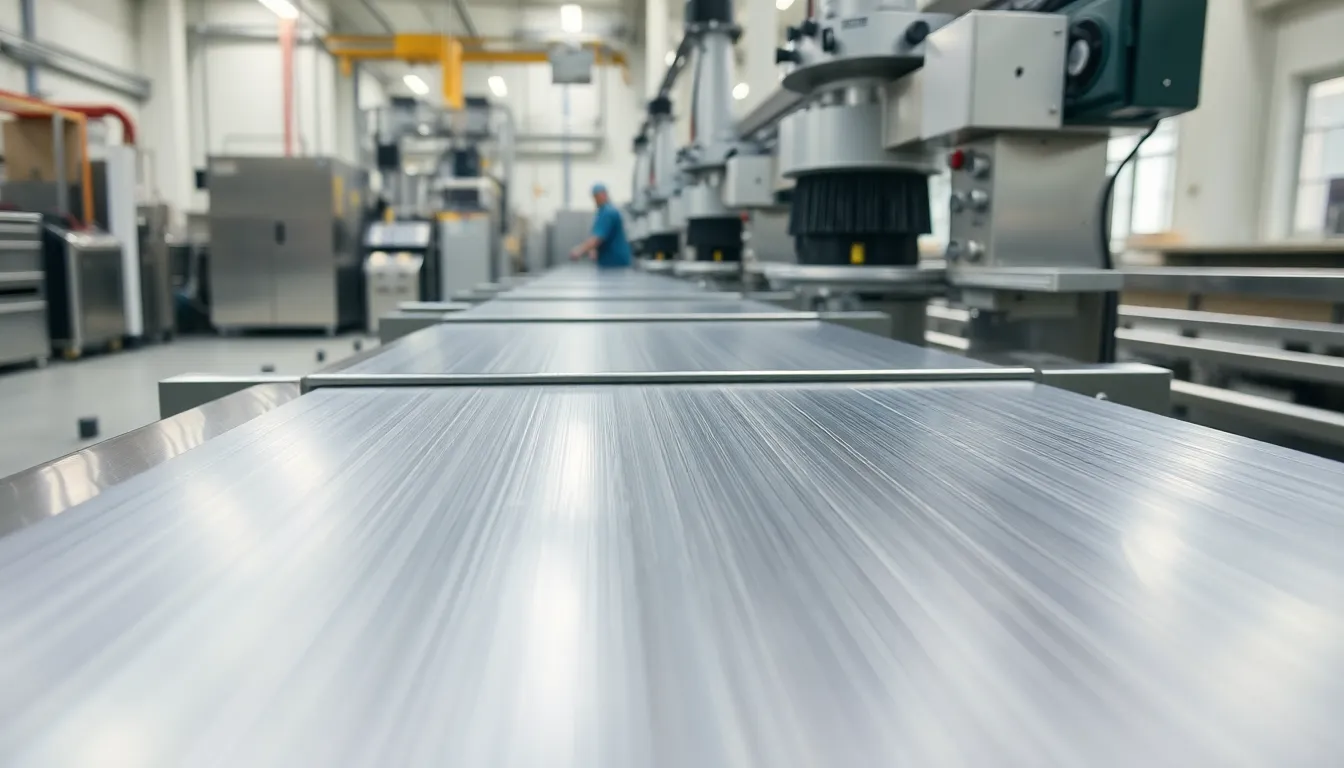
Brushed aluminum finish creates fine parallel lines through mechanical abrasion, producing a satin appearance that hides fingerprints and minor scratches better than polished surfaces. The process involves cleaning raw aluminum, running it through abrasive belts or stainless steel brushes, and often applying protective sealing or anodizing for enhanced corrosion resistance. Common applications include appliance panels, automotive trim, consumer electronics casings, and architectural elements where modern aesthetics meet durability requirements. Proper maintenance requires gentle cleaning with mild soap along the grain direction, avoiding harsh chemicals or abrasive materials. Yijin Hardware in Homestead, FL specializes in precision brushed aluminum treatments for medical devices, automotive components, and custom hardware across demanding industrial sectors.
Key Takeaways
- A brushed aluminum finish provides a linear grain and satin look, making it both stylish and practical for modern applications.
- The brushed aluminum finish process involves mechanical abrasion, and often includes protective sealing or anodizing for added corrosion resistance.
- Brushed aluminum effectively hides fingerprints and small scratches, differentiating it from polished and powder-coated finishes.
- This finish is widely used in appliances, automotive interiors, consumer electronics, and architectural elements for its durability and contemporary appeal.
- Proper care, such as gentle cleaning along the grain, preserves the appearance and lifespan of the brushed aluminum finish.
Understanding Brushed Aluminum: An Overview

Brushed aluminum is processed to create fine, parallel lines on its surface, resulting in a matte sheen and a unique tactile feel. This finish differs from polished or mirrored aluminum, presenting a modern look that conceals small scratches and fingerprints. The process is popular in industries such as automotive, aerospace, and consumer electronics, where appearance and practicality are both important. At its core, brushed aluminum finish is a combination of precise surface treatment and visual appeal, making it suitable for demanding environments and high-end applications.
How Brushed Aluminum Finish Is Made

The creation of a brushed aluminum finish typically follows a controlled mechanical process. It starts with raw aluminum, which is first cleaned and sometimes chemically treated to remove impurities. Next, the metal is run through abrasive belts or brushes, often made from stainless steel or other durable materials. This abrasion creates the distinctive linear surface grain.
The brushing process can be customized, changing the coarseness of the lines or the overall sheen depending on the application’s needs. Some manufacturers also apply a protective clear coat or anodize the surface to increase corrosion resistance. Yijin Hardware in Homestead, FL specializes in precision surface treatments, including brushing, to deliver consistent and high-quality aluminum finishes for clients in sectors like medical device manufacturing and automotive components manufacturing.
Key Characteristics of Brushed Aluminum Finish
A brushed aluminum finish has several defining features:
- Texture: The fine linear grain is unmistakable, giving it a soft, satin look.
- Reflectivity: This surface scatters light rather than reflecting it directly, reducing glare and making minor nicks less visible.
- Durability: While not as scratch-resistant as some hardened surfaces, brushed aluminum hides small imperfections well.
- Corrosion Resistance: When sealed or anodized, this finish provides good resistance against corrosion, especially in humid or challenging industrial settings.
These characteristics make brushed aluminum a trusted choice for decorative panels, architectural accents, and custom hardware solutions. For businesses in Homestead and beyond, working with an experienced provider like Yijin Hardware ensures the finish meets precise quality requirements across every order.
Common Uses and Applications
Brushed aluminum finishes are widely used in:
- Appliances: Refrigerator doors, microwave panels, and oven trims often feature brushed aluminum for both durability and style.
- Automotive Parts: Many dashboards, shifter knobs, and trim pieces use this finish to match the sleek interior aesthetics.
- Consumer Electronics: Laptops, smartphones, and audio equipment cases use brushed surfaces, which resist fingerprints and offer a premium look.
- Architectural Elements: Building claddings, elevator interiors, and signage benefit from the modern, functional qualities of brushed aluminum.
- Custom Hardware Components: Yijin Hardware frequently supplies brushed aluminum fasteners, enclosures, and sheet metal parts for OEMs serving diverse sectors.
This versatility, coupled with the finish’s appealing look and tactile qualities, drives its popularity across so many industries.
Brushed Aluminum vs. Other Finishes
It’s helpful to compare brushed aluminum with other common finishes:
- Polished Aluminum: Highly reflective, offering a mirror-like surface but prone to showing fingerprints and scratches easily.
- Anodized Aluminum: Anodizing can add color and even greater corrosion resistance but doesn’t produce the signature linear texture of brushing.
- Powder Coated Aluminum: Adds a colored, durable layer to the surface, suited for exterior applications but with a much different tactile and visual effect.
Brushed aluminum strikes a balance between form and function, offering visual texture without being overly shiny. Depending on the requirements, Yijin Hardware recommends brushed finishes for clients seeking a modern aesthetic and practical performance, especially when compared to more high-gloss or heavily coated alternatives.
Care and Maintenance of Brushed Aluminum Surfaces
Maintaining a brushed aluminum finish is straightforward but requires care to preserve its linear grain. Cleaning typically involves using a mild soap solution and a soft, non-abrasive cloth. Wiping in the direction of the grain helps avoid unwanted scratches or streaks. In cases where the surface is sealed or anodized, additional protection against oxidation and stains is provided, making upkeep even simpler.
Harsh chemical cleaners, steel wool, or scouring pads should be avoided, as they can damage the finish. For businesses sourcing precision-manufactured parts from Yijin Hardware, following these maintenance guidelines ensures the longevity and appearance of brushed aluminum components, whether in demanding industrial settings or consumer-facing products.
Yijin Hardware
Yijin Hardware offers a range of precision manufacturing services, including CNC machining, sheet metal fabrication, and custom fasteners. They also provide additional solutions such as die casting, injection molding, and 3D printing to support various industries like automotive, aerospace, medical, and energy.
Contact:
Gavin Yi, CEO
Phone: +1 626 263 5841
Email: [email protected]
Website: www.yijinsolution.com
Location:
760 NW 10th Ave, Homestead, FL 33030
Frequently Asked Questions About Brushed Aluminum Finish
What is a brushed aluminum finish?
A brushed aluminum finish is a surface treatment applied to aluminum, producing fine, parallel lines and a soft, satin-like look. This finish not only improves the metal’s appearance but also conceals fingerprints and minor scratches, making it ideal for both decorative and functional uses.
How is a brushed aluminum finish created?
Brushed aluminum is made by running raw, cleaned aluminum through abrasive belts or brushes. This process creates a distinctive linear texture. Sometimes, a clear protective coat or anodizing is added to boost corrosion resistance and durability.
Where is brushed aluminum finish commonly used?
Brushed aluminum finish is widely used in appliances, automotive trim, consumer electronics like laptops and smartphones, architectural accents, and custom hardware parts. Its modern appearance and ability to hide small flaws make it popular across many industries.
How do you properly clean and maintain brushed aluminum surfaces?
To care for brushed aluminum, clean it with mild soap and a soft, non-abrasive cloth, always wiping in the direction of the grain. Avoid harsh chemicals, steel wool, or abrasive pads, as these can scratch or dull the linear texture. Sealed or anodized finishes require less maintenance.
What is the difference between brushed and polished aluminum?
Brushed aluminum has a soft, matte texture with fine lines, reducing glare and hiding blemishes. Polished aluminum is highly reflective, offering a mirror-like finish but is more prone to showing fingerprints and scratches. The choice depends on the desired look and application.
Why choose a brushed aluminum finish over other finishes?
A brushed aluminum finish strikes a balance between aesthetics and practicality. It offers a modern, understated look, hides small imperfections well, and can be more resistant to corrosion when sealed. This makes it a versatile option compared to polished or powder-coated finishes.
